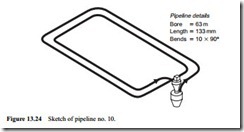Fly ash
Many hundreds of millions of tonnes of fly ash are produced around the world every year from the combustion of pulverized coal in thermal power stations and the major- ity of this is transported at some stage by pneumatic conveying systems. Although a considerable amount is transported by hydraulic conveying systems there is a gradual move away from the disposal of ash into lagoons on environmental grounds. Attempts are being made to find practical uses for the material, or to return it back to mines for underground stowing. For these purposes the ash is required in a dry form and so needs to be handled by pneumatic conveying systems.
Fly ash grades
As the flue gases pass through the boiler plant ducting, ash is collected at numerous locations along its route. The particle size of the fly ash will decrease as the distance of the collection point from the boiler combustion zone increases. Ash collected in the early economizer and air pre-heater hoppers tends to be granular while that collected
in the electrostatic precipitator hoppers towards the end of the flow path tends to be a fine dust. There may be some 40 collection hoppers in a typical 200 MW boiler plant and they all have to be off-loaded. Although the material to be conveyed from every hopper will be essentially the same, the conveying capability can vary very significantly [6].
In a major programme of research work to investigate the conveying performance of power station fly ash, a high pressure pneumatic conveying test facility was used [7]. The pipeline used was 133 m long, of 63 mm bore and incorporated 10 numbers of 90° bends and a sketch of this is given in Figure 13.24. A top discharge high pressure blow tank was used to feed the fly ash into the pipeline.
Conveying characteristics for fly ash collected from an air pre-heater hopper are presented in Figure 13.25a and those for ash from the first field of an electrostatic pre- cipitator hopper are shown in Figure 13.25b. The two sets of data are presented side by side for direct visual comparison because it is very often a system requirement that such different grades of ash should be conveyed by a common system. It is not unusual that the differences in conveying potential between these different grades of the same material are just not recognized and this is one of the major bulk solids produced in the world.
Lines of constant conveying line inlet air velocity have been superimposed on both sets of conveying characteristics and it will be seen that for the coarse ash the minimum value was about 13 m/s, and for the fine ash it was about 11 m/s for the low pres- sure dilute phase conveying and 3 m/s for high pressure dense phase conveying.
